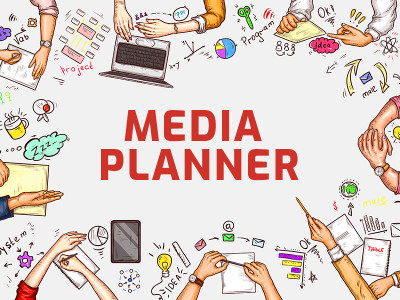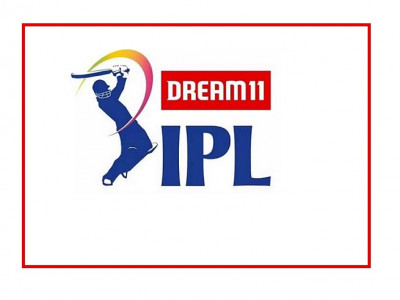TV advertising will remain critical for brands; attribution could be the key
After a restricted existence during the 3-4 months of lockdown, India has now entered the unlock mode. While brand activity remained muted during the lockdown period, it is slowly picking up now as market sentiments have improved and looks like we on our road to recovery. Brands are now opening up to spend and the TV spends are slowly climbing as the festive season is starting.
As we enter the new normal, brands will be closely monitoring their advertising performance and will expect a good ROI on the monies spent. While digital is moving on the fast lane and TV advertising is likely to accelerate as India unlocks, it will however take some more time for the market sentiments to shore up.
Also read: 900+ new advertisers & 1,400+ new brands seen in Jun-Jul’20: TAM AdEx
Marketing experts are expecting the rural markets to stimulate demand and help in India’s revival. Signs of this are already visible. Therefore, we can certainly look at TV being deployed by more brands here to garner good growth and market share. Brands might also look at adoption of new technologies to measure the impact and ensure that every rupee spent is delivering the end objectives.
Impact on Television spends due to the Pandemic
As per the report from AdEx, the month of April was kind of a washout month, while May month saw some 60 per cent climb. June saw some 60-70 per cent uplift, but from July onwards it has been a very positive move. “While, TV advertising did get impacted, but there were a lot of our clients in the insurance space and health space advertising during this period. FMCG, especially the essential categories, also continued to advertise during this period, which will benefit them in the long run," said Priti Murthy, CEO, OMD India.
Sharing her views on the impact of TV, Murthy said that with new content coming up on TV, it will definitely allow us to go back to normal in terms of how television planning is done. “At the same time, the way we are partnering with our channel partners has also changed a lot. It is not considered regular now for just the plan being made or the deal being done. I think there is a lot of ownership and partnership that’s getting created now specifically for clients and discussions are much more well-ingrained and there’s more depth in the way in which we are customising things for our clients,” he added.
Anubhav Sharma, Founder and CEO at SyncMedia, added here, “If I we pay closer attention, the impact of the pandemic has clearly led to an acceleration towards digital. More brands are now focused on and are working towards increasing their digital footprint than ever before.”
Role of TV advertising during the new normal
Despite the digital transformation, TV will continue to take a prominent place in advertising. A lot of brands that stayed away from TV are back on TV, such as auto. There is a depth of conversation and innovation, as well as the kind of channel mixes that we are going to see through not just from an original content perspective, but the signs behind the planning of ROI will become much stronger now.
Sharma affirmed that the role of Television will remain critical and attribution would be the key. Digital media has for years been able to measure the “lower funnel” effect of an advertising schedule, such as brand consideration, purchase intent and finally, sales. On the other hand, television was used for “upper funnel” objectives, such as building reach and brand awareness. “With the adoption of advance technologies in the space of ACR and Signal Processing coupled with AI/ML based inputs, brands can now also attribute and understand the impact of TV advertising on “lower funnel” attributes and business KPIs,” he added.
Speaking on the role of Television, Murthy, too, agreed that Television will continue to dominate even with the lockdown. She further said, “We saw transparent increase and reach increase in the AdEx Data, so it’s not like that people didn’t watch the repeat content – what ‘Ramayan’ did for Doordarshan was not imagined in the long decade. Similarly, TV didn’t vanish, it just changed its face. TV will come back with original content. We didn’t see a viewership decline at all on TV, so that is the strength of the medium.”
At the same time, Sharma said that with more businesses having larger digital footprint, it would be imperative to measure the impact of TV advertising on digital footprints like site visits, app installs, conversions, etc.
Transformation in Television, possible changes
However, transformation will take time. Both experts believed that linear TV has to transform itself once we see more change. India will take time to evolve and adapt eventually to the way OTT is behaving and what it is offering.
Sharma elucidated, “Everyone knew TV worked, but had no way to prove it or pinpoint the efficiencies within a plan with 100-150+ channels in the mix. Today, thanks to attribution, it can be measured and tied directly to business outcomes and that is going to be the key, driving ad dollars back to the medium in times to come. It’s really quite simple: when you can prove TV works and quantify its impact on business outcomes, advertisers will spend more money.”
Expressing his views on attribution, Sharma said, “We at SYNC are seeing the sell-side start to wake up to the fact that marketers are now exploring to look at actionable data and insights that go much beyond the regular reach and frequency curves for the campaign. This is a great opportunity for media owners and publishers to adapt to meet the demands of marketers that want to measure and optimise TV campaigns, but to also capitalise on the convergence of linear and digital.”
Some marketers and ad agencies have advanced more and are already employing platform-based attribution models to measure incremental reach, to understand optimal frequency basis the impact on core business KPIs, to optimise spends across linear and digital platforms.
Challenges faced in adopting adopt newer technologies
While Murthy believed that there are no challenges, Sharma pointed out that TV attribution requires multiple data points, starting with the granular tuning data from set top boxes of cable/ satellite TV providers, Automatic Content Recognition (ACR) from Smart TVs, the People Meter sample and mobile apps, among others. He further said, “The commingled data from TV is then integrated with inputs from various digital data points such as online visits/ sales, in-store traffic and on demand “first-party” information from marketers, to name a few. There are a number of ad tech companies providing TV attribution to buyers and sellers; however, there remains no standardisation.”
The other issue is the lack of understanding, there is, what I call, a data quality - quantity - quandary that most media agencies and clients tend to not look at; cost optimisation being the premise. But the data at the cheaper price point would never be as qualitative as anything that can really serve the purpose better and more effectively. While looking at data, one must take into consideration the nature of data like dynamic versus static, ageing of data like how recent it is, and what it can deliver.
Sharma commented that he was surprised to know how most media agencies and clients understood that a start-up in hyper location domain can give them in-store footfall attribution on every impression that they served during the campaign, knowing very well that cookies in itself are not location aware or that the apps are not fetching hyper location data in the background all the time. Then the obvious questions should have been how many of the devices (% terms) were actually tracked and how they are getting extrapolated to the entire impression served base and so on. “However, I must further add that adoption rates are now much better than ever before,” he added.
Murthy concluded by saying, “I think if you are using newer technology as an experiment and learning, it is great. We are doing a lot of work around that to make it sustainable. We need to see what ROI brings in and how it is connected with the consumer’s life journey with the product.”


















Share
Facebook
YouTube
Tweet
Twitter
LinkedIn